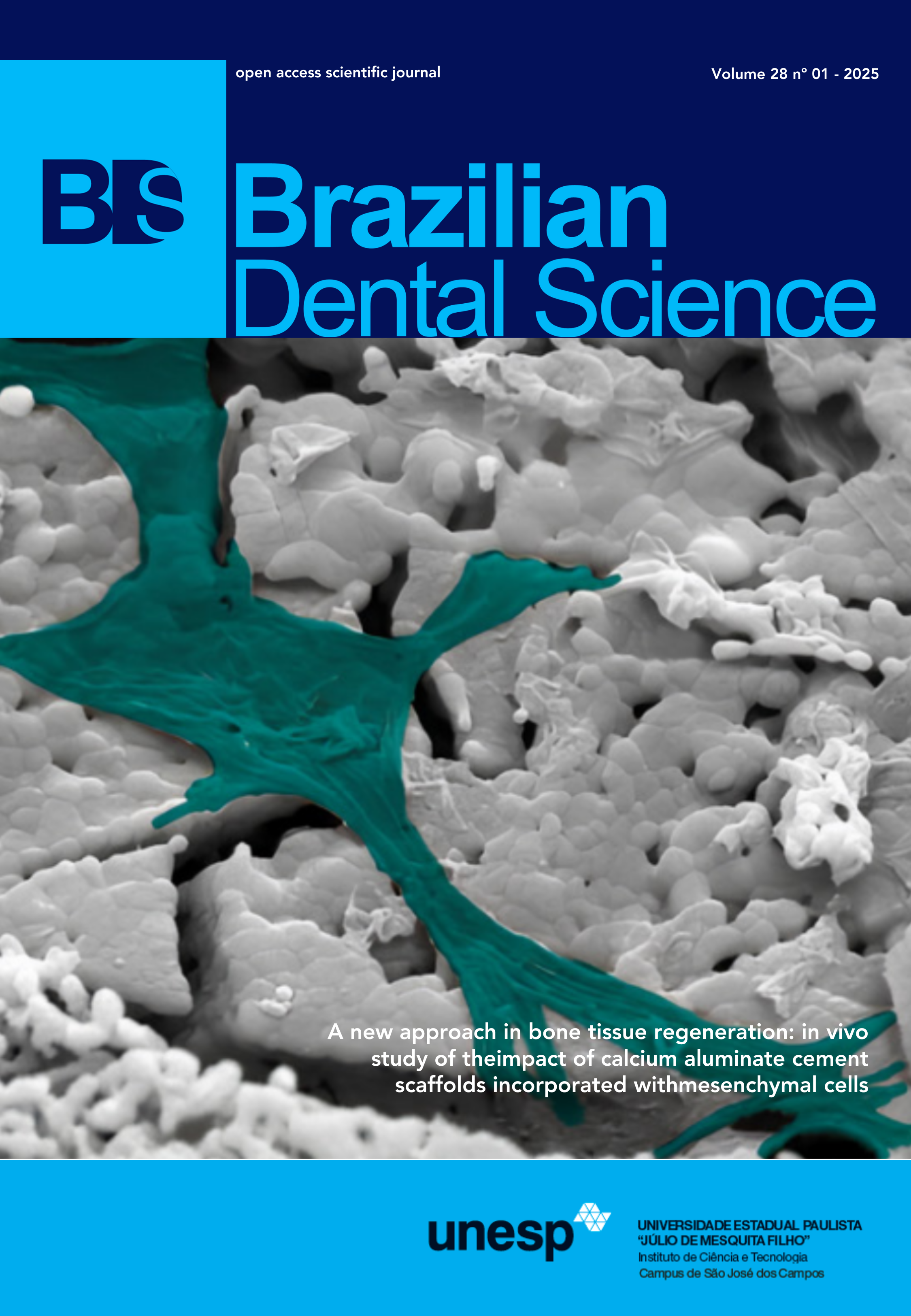Prevalence of maxillary sinusitis attributed to odontogenic causes in a chilean subpopulation: a cross sectional study
DOI:
https://doi.org/10.4322/bds.2025.e4540Resumen
Background: Odontogenic maxillary sinusitis is a condition caused by dental infections attributed to the close anatomical proximity that maxillary posterior teeth have with the maxillary sinus. Distinguishing odontogenic sinusitis from other types of sinusitis is crucial for its accurate treatment, avoiding improper treatments and multiple consultations. Objective: To analyze the prevalence of maxillary sinusitis attributed to odontogenic causes in a Chilean Subpopulation using cone-beam computed tomography (CBCT) scans. Material and Methods: One hundred and thirty-nine CBCT scans from patients with a previous radiological diagnosis of maxillary sinusitis were evaluated. Using a multiplanar and panoramic reconstruction, the thickening of one or both maxillary sinus mucosa was evaluated. The thickness of the sinus mucosa, together with the presence of associated dental pathologies and/or conditions were also evaluated using sagittal and coronal sections. Results: Of the 139 cases, 54.6% presented a unilateral thickening of the sinus membrane. Of those, 72.4% were associated with odontogenic factors, indicative of odontogenic sinusitis. The most frequent cause was apical periodontitis (23.4%), followed by endodontically treated teeth (21.1%). Bilateral mucosal thickening was observed in 45.4% of all cases. Within this subset, 46% displayed symmetrical mucosal thickening, while 54% showed disparities exceeding 2 mm. Among these, 44.1% had a superimposed dental pathology attributable to uneven increased mucosal thickness. Conclusion: Odontogenic etiology is a common cause of maxillary sinusitis, mainly associated with apical lesions and endodontically treated teeth. The overlay of dental pathology onto bilateral mucosal thickening patients can result in an exacerbation of the inflammatory state within the affected sinus membrane.
KEYWORDS
Chronic sinusitis; Cone beam computed tomography; Maxillary sinus; Odontogenic sinusitis; Schneider’s membrane.
Descargas
Descargas
Publicado
Cómo citar
Número
Sección
Licencia
Brazilian Dental Science uses the Creative Commons (CC-BY 4.0) license, thus preserving the integrity of articles in an open access environment. The journal allows the author to retain publishing rights without restrictions.
=================
COPYRIGHT TRANSFER AND RESPONSIBILITY STATEMENT
(PDF)
For all articles published in the BDS journal, copyright is retained by the authors. Articles are licensed under an open-access Creative Commons CC BY 4.0 license, meaning that anyone may download and read the paper for free. In addition, the article may be reused and quoted, provided that the original published version is cited. These conditions allow for maximum use and exposure of the work while ensuring that the authors receive proper credit. All metadata associated with published articles is released under the Creative Commons CC0 Universal Public Domain Dedication.
Before the submission, authors must obtain permission to reproduce any published material (figures, schemes, tables, or any extract of a text) that does not fall into the public domain or for which they do not hold the copyright. Permission should be requested by the authors from the copyright holder (usually the Publisher, please refer to the imprint of the individual publications to identify the copyright holder).
The authors hereby attest that the study is original and does not present manipulated data, fraud, or plagiarism. All names listed made a significant scientific contribution to the study, are aware of the presented data, and agree with the final version of the manuscript. They assume complete responsibility for the ethical aspects of the study.
This text must be printed and signed by all authors. The scanned version should be submitted as supplemental file during the submission process.
























